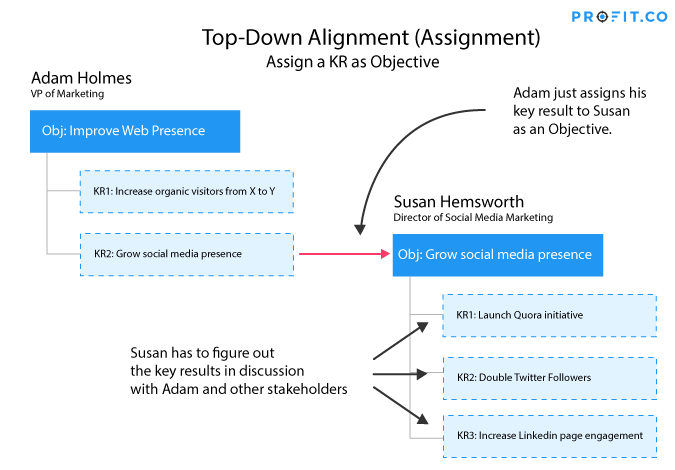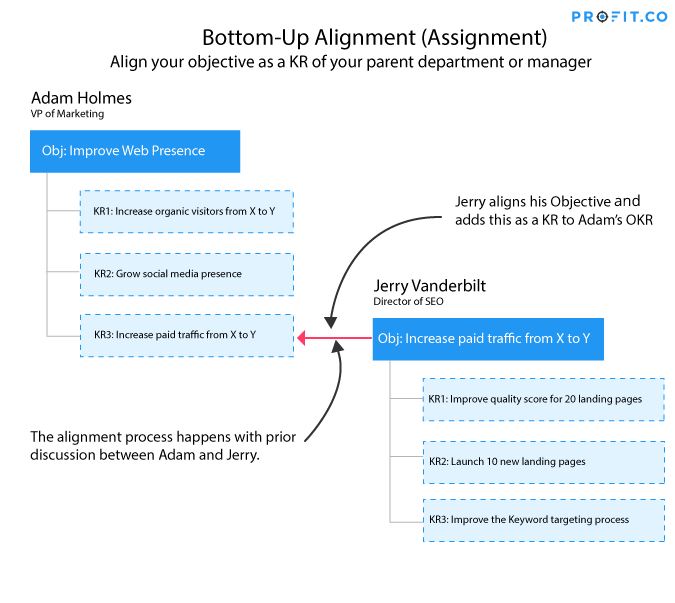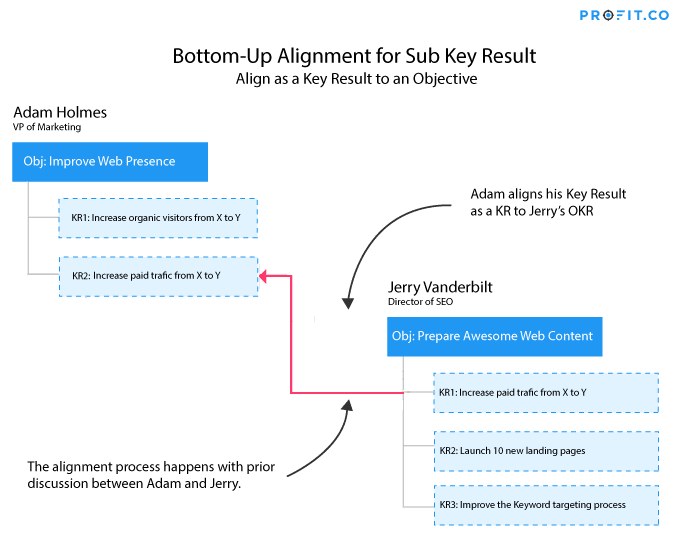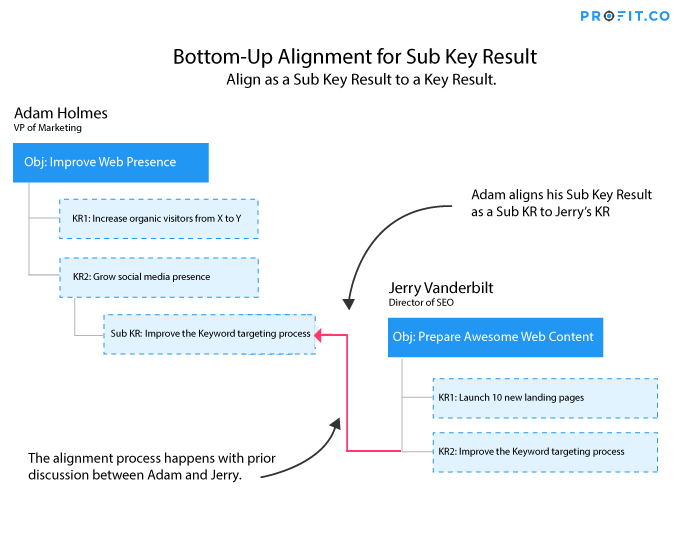Aligning your OKRs is an important component of achieving an effective OKR, and Profit.co makes this process as seamless as possible. Profit.co allows you to align your OKRs from top-down and bottom-up in a few different ways– these options allow you to feel most comfortable with the platform when it comes to how you want to assign and delegate OKRs. Here we’ll focus on two simple ways to accomplish top-down alignment and how to initiate bottom-up alignment.
Top-down alignment
For top-down alignment, you can align your OKRs in Profit.co by assigning your Key Result as an Objective, or, as a Key Result. This way, the assignee will receive that Objective or Key Result as a priority.
Let’s start with the following OKR example Adam, the VP of Marketing, is working on. If he needs assistance, he can assign his Key Results to other employees as Objectives or as Key Results.

A. Assigning Key Result as an Objective:
If you assign an Objective, you can add your own Key Results to accomplish the Objective. Here, you’ll need to figure “how” to, build your Key Results, and how to get the Key Results done.
In our example, Adam assigns the Key Result to Susan as an Objective, and Susan has to figure out the Key Results in discussion with Adam and other stakeholders:

Here is what it would look like in Profit.co:
Once you assign the Key Result as an Objective, the progress that’s made at the Objective level will be reflected upward to the aligned Key Result’s progress.
B. Assigning Key Result as a Key Result:
If you have assigned a Key Result, you already know the “how”, and you just need to get it done. In other words, you’re delegating. Here, you can add your Key Result to another existing Objective or a newly created one.
In our example, Jerry just needs to get the Key Result done and can do so by adding it to an existing objective:

Here is what it would look like in Profit.co:
Once you assign the Key Result as a Key Result, the progress that’s made at the Key Result level will connect to the aligned Key Result’s progress.
Bottom-up Alignment
In contrast to Top-Down Alignment, there may be instances where it’s important for alignments to come from the bottom up. There are times where individual contributors may have more insight into customers’ thoughts or other ideas that don’t necessarily reach the executive level. Taking into account employees’ ideas and contributions also adds an incentive to be invested and see the OKR through.
To create a bottom-up alignment in Profit, you can align with someone else and add your objective as a key result to one of their objectives.
Continuing with our example, Jerry has an objective that he’d like to align with Adam. To do so, he would add his objective “Increase Paid Traffic from X to Y” as a key result on Adam’s objective “Improve Web Presence.”
This connection is established after prior discussion between Adam and Jerry.

This is what Bottom-Up Alignment looks like in Profit:
The progress that you make on your objective will be reflected in the key result that you’ve aligned with.
Aligning sub key results using Bottom-up alignment
Like aligning your key results using top-down and bottom-up alignment, you can only perform bottom-up alignment on your sub key results in Profit.co.
You can perform 2 actions :
- Align as a key result to an objective
- Align as a subkey result to a key result.
To understand the action “Align as a key result to an objective” better, let’s take a look at the below explained illustration.
Here, Adam Holmes aligns his key result “Increase paid traffic from X to Y with the objective of Jerry Vanderbilt, and therefore it settles as one of the key results of Jerry Vanderbilt’s objective.

To understand the action “Align as a sub key result to a key result” better, let’s take a look at the below explained illustration.
Here, Adam Holmes aligns the sub key result “Increase paid traffic from X to Y” as a sub key result to Jerry Vanderbilt’s key result “Improve the keyword targeting process”

